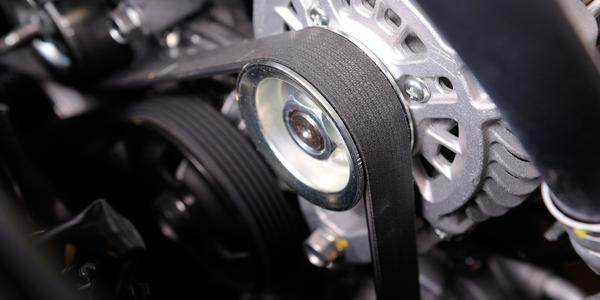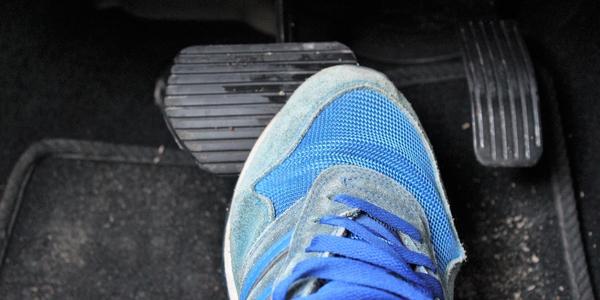Summer road trip season is almost here. Follow this 7-step checklist to safely hit the road.
Getting ready for a summer road trip means getting your car ready, too, and that requires completing some necessary car maintenance before hitting the open road. A car is a complex machine, and ensuring it’s in tip-top condition before heading out on your summer road trip requires a thorough car inspection.
Regularly Scheduled Car Maintenance
To start off on the right foot with your summer car maintenance, it’s best to complete your car’s regularly scheduled maintenance. Each car has a maintenance schedule that lets you know how often you should change the oil, filters, spark plugs, and complete any other necessary services suggested by the manufacturer. This car maintenance service schedule is often in the owner’s manual. Your car’s dealership should also be able to provide you with this information.
A car’s regular maintenance schedule will differ based on the make and model, but they often include similar services like changing the oil and oil filter, replacing the air and cabin filters, rotating and inspecting the tires, checking fluids, and possibly more.
7 Steps for Road Trip Car Maintenance
However, there are seven important steps you should take beyond your regular car maintenance to prepare for your summer road trip.

1. Change the oil
An engine oil change is what many of us picture when thinking about basic car maintenance. You can attempt to do this yourself, but many quick-service locations can quickly and cheaply do this for you. Clean oil and a clean oil filter help ensure the engine is properly lubricated and cooled.
Completing your engine oil change at a quick-service center or dealership service center often includes the added benefit of trained mechanics performing a complete inspection of the car. They can identify any potential problems with your vehicle, whether it’s the tires, battery, or coolant system.
Prices for an engine oil and engine oil filter depend on the make, model, and engine size of the car. A typical oil change can cost around $20 if you do it yourself, or $40 and up if changed by a professional and depending on the type of oil.

2. Check your tires
There are many things to think about when preparing your car’s tires for your summer road trip. Make sure your tires are inflated to the correct tire pressure, which can easily be found on a sticker in the driver’s door jamb, along with other information. It’s also located in the owner’s manual. It’s simple enough to check the pressure yourself with a tire pressure gauge. These are available at most auto parts stores and gas stations and typically less than $10.
Tire maintenance also means checking the tread depth. Many U.S. states have laws requiring a minimum of 2/32 of an inch of tread on the tires. You can check this with an inexpensive tire tread depth gauge that is also often under $10. But if you don’t have one of those, you can use a penny. Hold the penny vertically, but rotate it so that Lincoln’s head is pointed downward. Place it in the thread to see if the top of Lincoln’s head disappears. If so, you have more than 2/32 of an inch of tread on your tire. Otherwise it’s time to replace them.
Improperly inflated tires could damage a car’s rim or suspension, causing hundreds or even thousands of dollars of damage. It can also lead to a blowout while driving, and potentially even cause an accident.
Another thing to look for on your tires is wear. Tires can wear unevenly, creating imperfections in the tire that could affect traction. Make sure your tires are regularly rotated to avoid irregular wear. Check for other defects, like bulges and tire tread separation, to ensure your tires are safe and ready for the road.
Look for any tire damage and consult a tire professional with any concerns or questions.
Also, check the car’s alignment to see if it drives straight down the road. If the car pulls to one side, forcefully enough to pull the car out of its lane, it is likely out of alignment. Have this fixed by a professional because it can cause uneven wear on the tires and affect costly suspension components.

3. Check wipers and fluid levels
Visibility is vital to safe driving. That means not only should your car have a clean windshield, but should also be ready to deal with any grime or inclement weather that comes your way. Check your windshield wipers to make sure they make consistent contact with the windshield to guarantee the wiper blades sweep the water out of view.
Also, check your windshield washer fluid levels. This is cheap and available at most gas stations and auto parts stores for only a few dollars. The reservoir is often located under the car’s hood, but the owner’s manual will display the correct location and refill procedure.

4. Belts and hoses
Engines feature numerous moving parts and fluids which require hoses and belts to assist. One of the major belts on a car engine is a serpentine belt. This can wear down, crack, and eventually break.
You’ll want to visually inspect the serpentine belt and radiation hoses while they’re cool so you don’t risk a burn injury. Wait until your car has been sitting for long enough that the engine is no longer hot.
When checking the belts, look for any visible cracks or deformations and check to see if there’s any slack. If there is, you’ll need to replace it. However, this can require special knowledge and skills, and it may need to be completed by a professional. Price will vary depending on the make and model of your car. A serpentine belt typically costs between $25 and $75, but could cost as much as $200 if you have someone else perform the labor.
Hoses transport coolant from the radiator to the engine and back. Over time, these hoses can turn hard and brittle from years of constant heat from the engine. This can cause cracks, leading to leaking radiator fluid. A car engine without coolant runs the risk of overheating and catastrophically failing. This is also a good time to check your car’s coolant, or radiator, fluid. Refer to the owner’s manual to check this safely.
This would also be an excellent time to check the air filter. Each make and model is different, so consult the owner’s manual for the proper car maintenance procedure. Air filters are available from a variety of suppliers with budget and high-end performance options available. An added bonus is that a clean air filter can improve your fuel economy.

5. Brakes
Brakes are an integral part of the vehicle. You will need to visually inspect them, which requires removing the wheels from the vehicle to see the brake pads and rotors. Most quick-service stations can do this for a small fee. Check the brake fluid reservoir located under the hood. Visual indicators should show the required fluid amount. Check the fluid, and consult the owner’s manual if it’s low.

6. Lights and electrical car maintenance
One thing that’s easily forgotten is checking the car’s lights, and that includes more than just the headlights. The high beams, taillights, fog lights, turn signals, brake lights, license plate lights, and reverse lights should all be checked. These are essential at night for maximum safety, but they’re also required by law, and no one wants to get a ticket on their summer road trip for failing to perform essential vehicle maintenance.
Another thing to check is the battery, especially if you’re driving into an extreme climate. Batteries don’t do well in extremely high or low temperatures, and a bad battery on its last leg might leave you stranded. Look for corrosion around the car battery terminals because this can affect the connection. You can get your battery checked at most auto parts stores free of charge.

7. Perform a tune-up
A tune-up might be necessary if your car is old, has accumulated many miles, or missed a few regularly scheduled maintenance services. A tune-up generally means checking every vital vehicle system and replacing anything that’s necessary. This inspection often includes the ingestion system, serpentine belt, complete oil change, thorough car inspection, and more.


Bonus: Good Car Maintenance Improves Fuel Economy
A well-running car requires regular car maintenance and service. When that service is complete the car can run more efficiently, which means the car doesn’t use as much fuel. A well-maintained car returns good fuel economy. Properly inflated tires, a clean air filter, a tuned-up ignition system, and a fresh oil change can improve a car’s gas mileage and reduce how often you have to fill up.

Final Checklist Before Your Summer Road Trip
Want to make sure your car is ready for the open road? There’s a few more things you can do.
One thing many people forget to check is the spare tire. Even though your car’s tires might be in good condition and filled to the right tire pressure, that doesn’t mean you won’t get a flat tire. Check the spare tire pressure to avoid any summer road trip headaches.
You should also prepare an emergency kit for your car. These often include a small first-aid kit, jumper cables for the car battery, tow straps, and more.
Preparing your car for your next road trip requires a lot of car maintenance. Keeping up with your car’s regular maintenance schedule will cut down on what you need to do before taking off, but you should always thoroughly inspect your vehicle before beginning any long road trip.
The basics of car maintenance like proper tire pressure, fresh oil, new wiper blades, new brakes pad, and a full windshield washer fluid reservoir go a long way in preparing one’s vehicle for the summer road trip season — and helping to guarantee a headache-free vacation.
About The Author
RateGenius
A better way to refinance your auto loan. RateGenius works with 150+ lenders nationwide to help you save money on your car payments. Since 1999, we've helped customers find the most competitive interest rate to refinance their loans on cars, trucks, and SUVs. www.rategenius.com
;)











